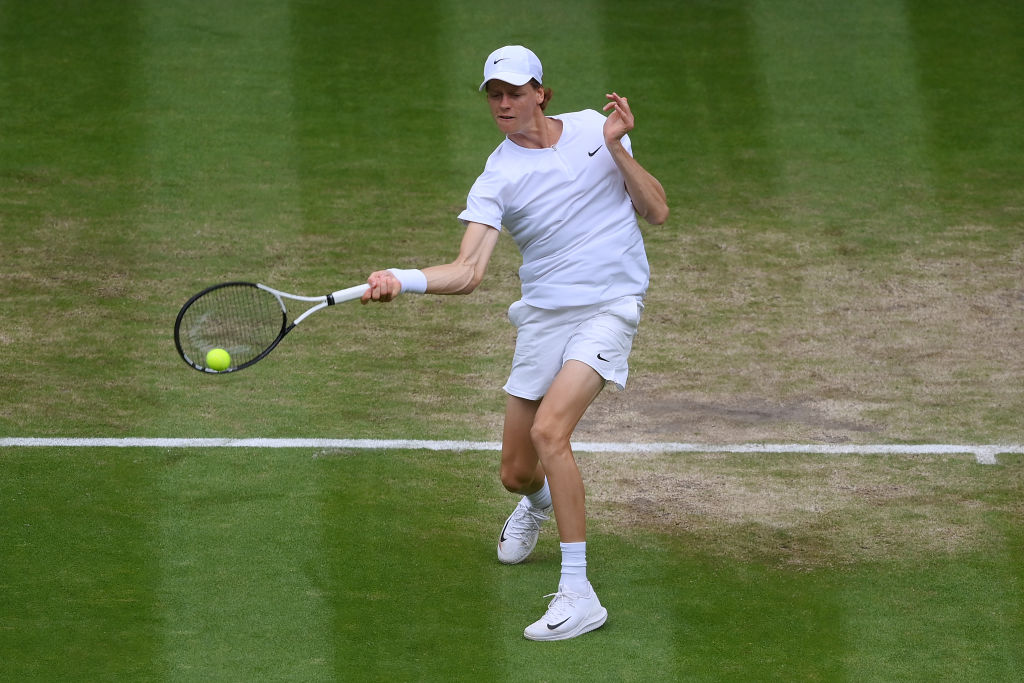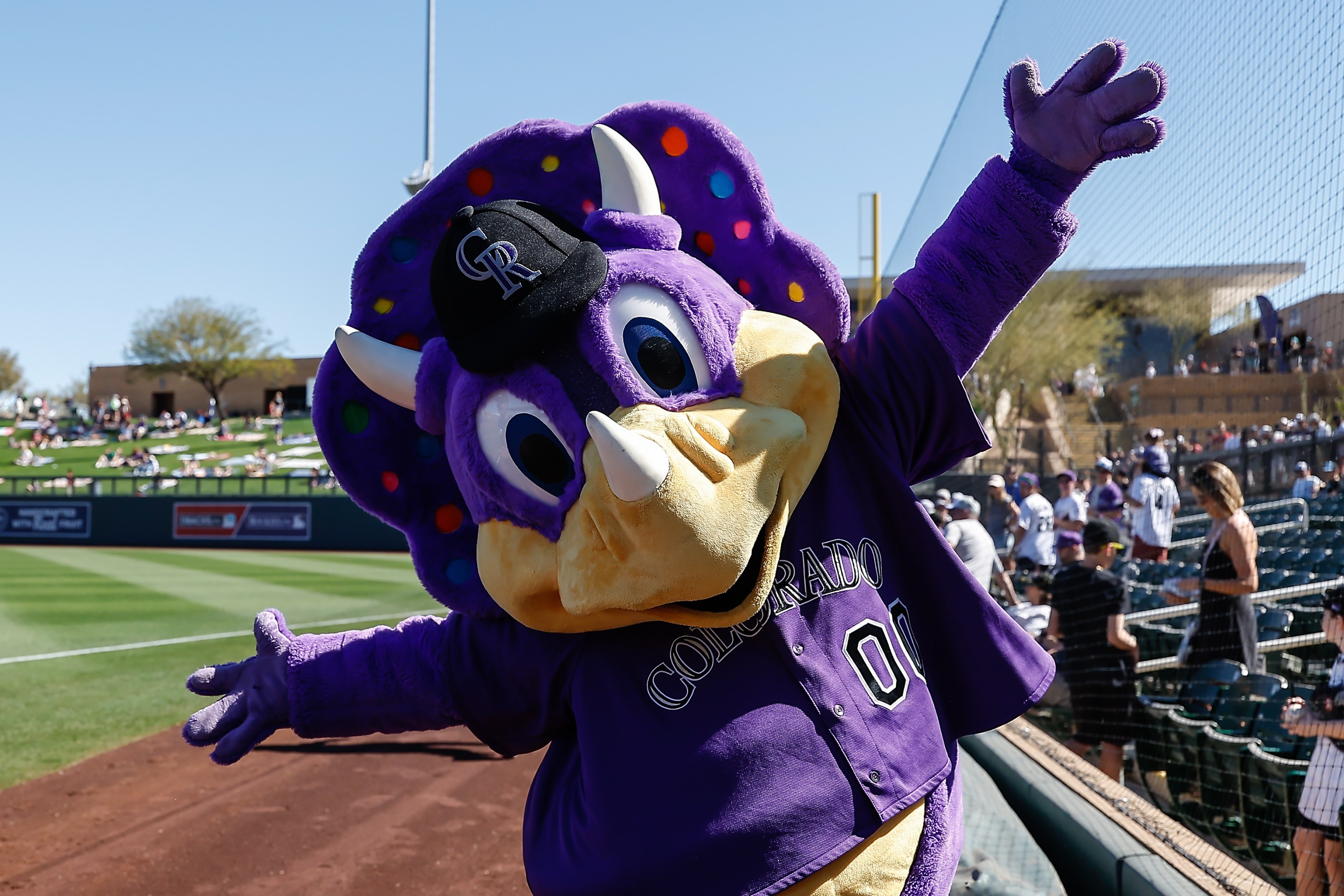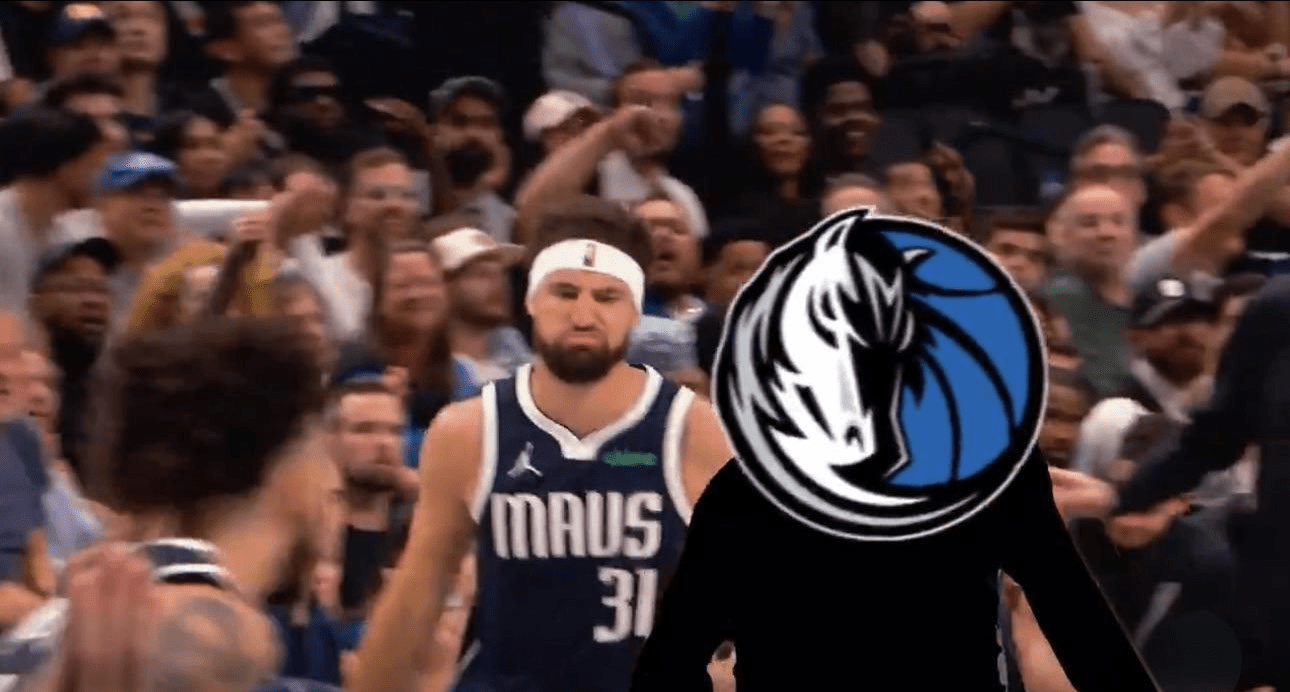In the span of three days at Wimbledon, 20-year-old Jannik Sinner ran through two rites of passage: the spark of a new rivalry with a genius peer, and the fizzle of an old champ dousing all hopes. On Sunday, Sinner took down Carlos Alcaraz, the 19-year-old who'd spent all spring leapfrogging him in the prodigy ladder and beating the greats. On Tuesday, Sinner threatened to follow Alcaraz's example, running up a two-set lead on Novak Djokovic, before falling to the top seed and six-time champ 5-7, 2-6, 6-3, 6-2, 6-2. Hopefully the young Italian can take it all in stride. You win some, and you almost-win-until-crushed-by-an-inexorable-force some. He can at least take solace in the fact that he is now the face of both Parmesan cheese and Gucci.
Sinner, known for the unerring timing and unsettling booms of his racquet, has succeeded on other surfaces but never won a single tour-level match on grass heading into this year's Wimbledon. Between that inexperience and some recent injury history—he hadn't played a match since defaulting in the fourth round at the French Open with left knee trouble—expectations were low for him in London. But Sinner came in as the No. 10 seed and pushed steadily through the first few rounds. He stopped slipping on the grass, and figured out how to slide with purpose and (mostly) control. He dialed in on return against John Isner, premier servebot and hellacious grass-court matchup, breaking him two times to win in straight sets.
And Sinner's performance against Alcaraz in the fourth round had me hastily retracting old doubt that the two players would have a fruitful rivalry. At least on this surface, unfamiliar to both, they're dead-even. At the very least their grass-court meetings will be worth watching for the next decade. Squint at some of these points and you can see an only lightly sedated Young Nadal vs. Young Djokovic.
For all the hype around the faultless game of Alcaraz, it was a jarring reminder of how well-rounded Sinner's game is, too. If he isn't already, the Italian will soon be the most powerful hitter on tour, regularly unreeling full-sprint forehands that clock in the triple digits. His length and uncanny timing also make him a dangerous returner; he sits 10th best on tour in percentage of return points won. His own serve is where the upside lies, and it's been slowly improving as well.
Heading into a quarterfinal against a player as heavily favored as Djokovic, a liberated Sinner could swing free. Djokovic opened the match strong and drew a break point for a 5-1 lead before Sinner stabilized. The No. 1 seed then threw in one of the worst service games of his season, making three errors, and giving Sinner a chance to pull even, sneak in a late break of serve, and take the set. Djokovic remained erratic. Across those two sets, the Serb looked at turns physically feeble and tactically self-defeating. To use the technical term, he looked like total butt. But I've seen this movie too many times. Djokovic has come back from two sets down six times in his career, including twice during last year's French Open run, both times against promising young players who had no idea they were stuck in the jaws of tennis' cruelest trap until, suddenly, they were shaking hands at the net. There's no reason Djokovic would tank intentionally, but sometimes it feels like he does it for sport. As if to prove to himself—who remains, at 35, one of the best-conditioned people alive—that he can still out-marathon a kid. “To be honest, I even liked the fact that I lost the first couple sets,” he said last season, after beating then-19-year-old Lorenzo Musetti. “I like to play young guys in best-of-five, because I feel even if they are leading a set or two sets to love as it was the case today, I still like my chances." Bone-chilling stuff.
By Djokovic's account, the match turned on a pep talk he gave himself in the mirror during a bathroom break after the second set. Mirror Novak must have had some serious bars, because from there, this match was all Djokovic. He opened the third set by breaking Sinner's serve immediately. He permitted Sinner a few thrills—an intense exchange at net that nearly allowed Sinner a shot to break back into the third set, a cheeky backhand overhead, a spectacular retrieval—but in the next two sets Djokovic followed the same blueprint: break early, play clean, and drag the set to its inevitable conclusion. Near the end he did submit his trademark shot, with a new celebration:
This is how champions play 💫
— Wimbledon (@Wimbledon) July 5, 2022
Over to you, @DjokerNole... #Wimbledon | #CentreCourt100 pic.twitter.com/fn5KXfpxUo
What are you supposed to do? He hits you with the airplane. You simply have to sit there as he spoon-feeds you defeat.





